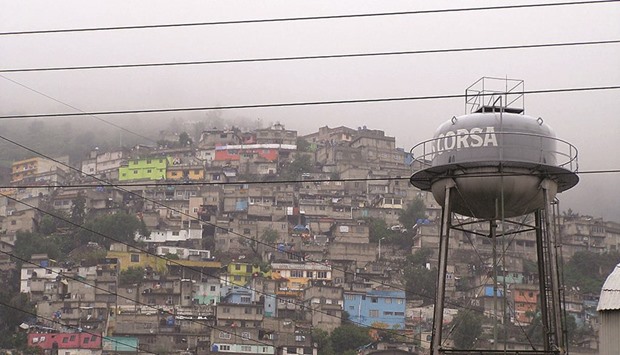In 1958, Carlos Fuentes wrote a book about Mexico City, entitled Where the Air Is Clear. Given the soupy, polluted air that now smothers the city, the title seems almost laughable, except the quality of the air in Mexico’s capital is no laughing matter. The pollution is making people sick and it seems that the geography of the city is working against any attempts to clear the air.
The residents of Mexico’s capital used to enjoy some of the cleanest air in the world. According to researchers at the University of Salzburg, in the 1940s, the average visibility in Mexico City was 100km. However, in the space of just one generation, the city has been plunged into a smoggy haze. It was named the most polluted in the world by the United Nations in 1992 and the smog has reduced the average visibility to approximately 1.5km. Harmful gases affect the population every day.
The government has made attempts to address the problem, but it’s not as easy as it might be. In 1950, the population was just 3 million, but since then it has exploded. Mexico City is now one of the largest metropolitan areas in the world and is home to nearly 21 million people. The changes have made the city almost unrecognisable.
As the population has boomed, the pollution has also increased dramatically. This is to be expected in any rapidly expanding city, but in Mexico City the problems are exacerbated by its geography. The city is at an elevation of approximately 2240 metres (7350 feet) above sea level and is surrounded by towering mountains, neither of which helps the air quality.
The only gap in the mountain range is to the north and as you would expect, the mountains prevent the pollution from escaping the confines of the city. In the winter months, the prevailing wind is from the north, through the gap in the mountains. However, the northern outskirts of the city are home to much of the city’s industry. Therefore the northerly wind doesn’t blow clean air into the city, but air that is already polluted.
The dirty air then picks up further pollution as it moves across the city, before it pushes up against the mountains in the south. During winter an area of high pressure dominates the region and this acts as a lid on the atmosphere, preventing the air from scaling the mountains and escaping the basin. The pollution is therefore trapped near the ground, where the population.
In the summer, the conditions are slightly less bleak. For a start, summer is the rainy season and rain helps to clean the atmosphere, but also the warm weather also helps to lift the air, which moves the pollution slightly further away from the residents.
The mountains clearly don’t help the air quality, but neither does the height of the city. Most vehicles are designed to work at sea level. At high altitudes the air is thinner and there is less oxygen available. This means engines are less efficient, which increases the emissions of carbon monoxide, hydrocarbons and other pollutants, including volatile organic compounds.
It is the volatile organic compounds which are of particular concern to Mexico’s capital, because when they are exposed to ultraviolet radiation from the sun, they form ozone. Unfortunately, not only does the altitude increase the amount of these compounds in the atmosphere, it also increases the amount of ultraviolet radiation.
Generally our atmosphere helps to filter out the radiation. The ultraviolet rays are absorbed by gases such as water vapour, oxygen and carbon dioxide which are naturally present in the air. However, at high altitudes the atmosphere is thinner and therefore there is more radiation present. The increase in ultraviolent radiation, together with the increase in pollutants, explains why it is ozone which is currently causing a problem in Mexico City.
When ozone is high up in the atmosphere, it is a very useful substance. It protects the Earth from some of the harmful rays emitted by the sun. However, at ground level, the colourless gas can irritate the respiratory system, aggravate asthma and even cause permanent lung damage. It has also been seen to affect the growth of trees and plants.
Despite the geographical challenges, there has been an improvement in air quality since the 1980s. Government regulation forced catalytic converters to be installed on cars and lead to be removed from fuel. A number of the most polluting factories were either closed down or moved away from the capital. Money has also been invested in public transport, extending subways and improving the bus system.
However, the pollution is becoming worse again. In March this year, the government issued the first ‘ozone alert’ in almost 14 years. The following month saw the threshold for ozone alerts lowered from an index of 190 to 150, meaning the alerts are now more frequent. Warnings were issued in early April, the beginning of May, early July and most recently on August 11.
The ozone alerts issued in July and August are the most alarming, because these occurred in the middle of the rainy season. The alerts trigger a reduction in the number of vehicles allowed on the roads and put restrictions on industrial emissions. This does alleviate the air quality, but it’s only a temporary fix.
Despite its unwieldy size, Mexico City is continuing to grow. This can only add to its air quality problems. The topography of the area cannot change, but something must be done, otherwise the air will continue to get thicker with pollution.

Irregular settlements in Cuautepec el alto, Mexico City, in the summer of 2010. In the 1940s, the average visibility in Mexico City was 100km. However, in the space of just one generation, the city has been plunged into a smoggy haze and visibility has fallen to about 1.5km. Photo by Protoplasma Kid/Wikipedia
